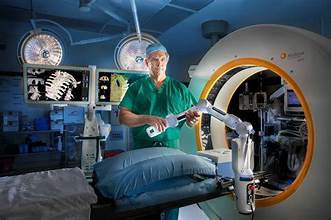In recent years, technological advancements have been transforming the landscape of healthcare, and one notable innovation that has revolutionized the field of surgery is the da Vinci Robotics Surgery System. Developed by Intuitive Surgical, this cutting-edge robotic platform has gained widespread recognition for its precision, minimally invasive approach, and improved patient outcomes. In this blog post, we will delve into the intricacies of the da Vinci system, exploring its history, technology, applications, benefits, and the future of robotic surgery.
The Genesis of da Vinci
The da Vinci Surgical System traces its roots back to the late 20th century when the concept of robotic-assisted surgery began to take shape. Intuitive Surgical was founded in 1995 with the vision of developing innovative technologies to enhance surgical procedures. The first iteration of the da Vinci system was introduced in 1999 and received clearance from the U.S.
Technology at the Heart of da Vinci
At the core of the da Vinci system is a sophisticated robotic platform designed to enable surgeons to perform minimally invasive procedures with enhanced precision and control. The system consists of three main components:
- Surgeon Console: The surgeon sits at the console, equipped with a 3D high-definition display and master controls.
- Patient-side Cart: This component houses the robotic arms and instruments that are used during surgery. The arms are controlled by the surgeon from the console and mimic their hand movements with precision. The robotic instruments are designed to mimic the dexterity of the human hand but with greater flexibility.
- Vision Cart: The vision cart contains the hardware and software necessary to process and display the 3D imagery from the surgical site. It plays a crucial role in providing the surgeon with a clear and detailed view of the patient’s anatomy.
Applications of da Vinci Surgery
The da Vinci system has found applications across various surgical specialties, including:
- Gynecology: Hysterectomy, myomectomy, and other gynecological procedures.
- Urology: Prostatectomy, kidney surgery, and bladder surgery.
- Cardiac Surgery: Mitral valve repair and coronary artery bypass grafting.
- Head and Neck Surgery: Procedures involving the mouth, throat, and other structures in the head and neck.
Benefits of da Vinci Surgery
The da Vinci Robotics Surgery System offers several advantages over traditional open surgery and even conventional laparoscopic techniques:

- Precision and Dexterity: The robotic arms provide a greater range of motion and enhanced dexterity, allowing surgeons to perform complex maneuvers with precision.
- Minimally Invasive: The system enables surgeons to operate through small incisions, reducing trauma to surrounding tissues. This results in less pain, shorter recovery times, and smaller scars for patients.
- Enhanced Visualization: The 3D high-definition display provides surgeons with a detailed and magnified view of the surgical site, enhancing their ability to navigate and manipulate tissues.
- Reduced Blood Loss and Complications: The minimally invasive nature of da Vinci surgery often leads to reduced blood loss, lower rates of infection, and fewer postoperative complications.
- Quicker Recovery: Patients undergoing da Vinci surgery typically experience a faster recovery and return to normal activities compared to traditional surgery.
Challenges and Future Developments
While the da Vinci system has been a game-changer in the field of surgery, it is not without its challenges. The high cost of the system, the need for specialized training for surgeons, and concerns about over-reliance on technology are some of the issues that have been raised.
Looking ahead, ongoing research and development aim to address these challenges and further enhance the capabilities of robotic-assisted surgery. Future iterations may incorporate advancements such as artificial intelligence, haptic feedback, and even greater miniaturization of robotic instruments.
Conclusion
The da Vinci Robotics Surgery System has undoubtedly transformed the way surgeries are performed, offering a combination of precision, minimally invasive techniques, and improved patient outcomes. As technology continues to advance, we can expect robotic-assisted surgery to play an increasingly significant role in various medical specialties, ushering in a new era of surgical innovation and patient care.